- Why Us?
- Features
White Label
For SaaS Platforms & Agencies
Provide our complete analytics suite to your clients, directly within your own interface and with your/their own branding. Discover Analytics-as-a-Service and White Label Analytics. Great benefit, minimal effort.
- Pricing
- White Label
- Success Stories
- ResourcesGetting Started
Top 11 Website Analytics Tools in 2025: Find the Best Player

Looking for the real RocknRolla of website analytics? Hang in there, we’ve got some mobsters ready to make you an offer you can’t refuse!
While Al Capone and Pablo Escobar were two of the biggest kingpins on Earth, website analytics tools are also in the running to make a strong name for themselves. Some of them are better known for violating privacy laws, others for their comprehensive feature packages. Not really ‘potayto, potahto’.
With so many businesses operating in the online world, spreading influence with their websites, analytics tools have become the true AK-47 of the online world - with bullets printing the names of the competition.
The way in which you can improve site performance and study your customer interactions has changed! Back in the day, you generally had to physically meet or speak with people to get your insights, and ultimately, sales.
Now, you can have it all at the touch of a button - or a click of the mouse! These changes have improved efficiency and effectiveness, making life much easier for business owners.
But leaving the benefits of website analytics aside for now, let's do some digging and find a bona fide analytics tool for 2025 that includes the three most powerful weapons: performance statistics, visitor behavior analytics, and visitor communication.
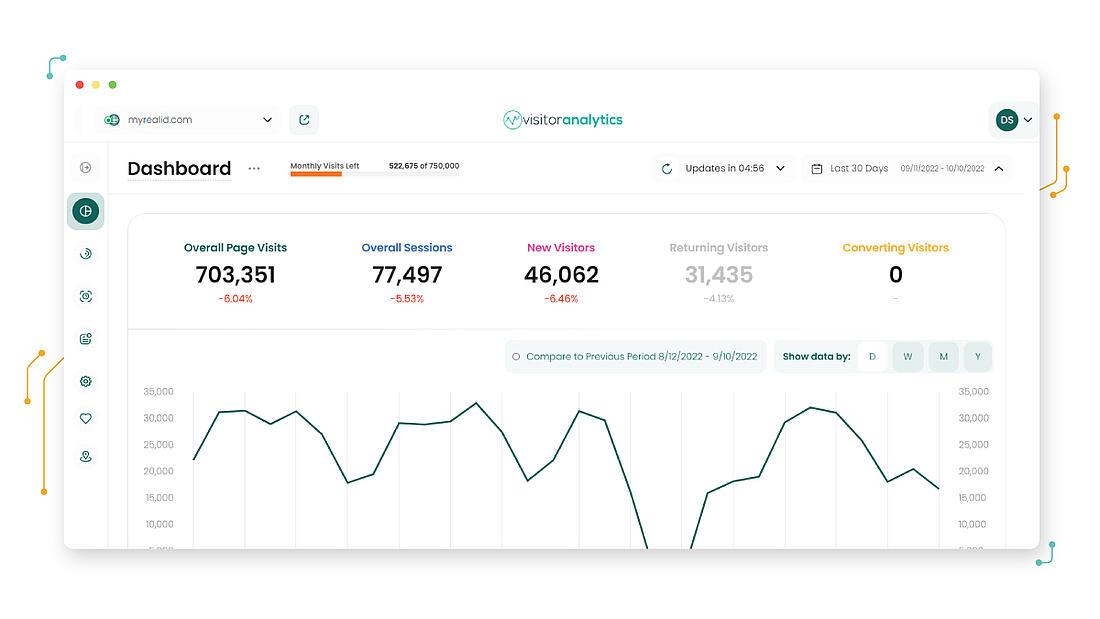
TWIPLA
Not all heroes wear capes, and not all web analytics tools are a good fit. But TWIPLA surely is!
TWIPLA is an all-in-one, completely GDPR-compliant web analytics tool that makes visitor tracking easy.
The platform is very user-friendly and tracks both performance statistics and visitor behavior analytics, without needing help from a marketer or a tech specialist.
You will be able to see precisely how your website is performing, regardless of your technical skills.
You can easily connect TWIPLA to pretty much any type of website, no matter the platform. You will be able to see all of your key stats at a glance, as well as detailed information about your visitors.
The platform has also advanced from website traffic analytics to new features, such as visitor recordings and heatmaps.
Collecting all important customer feedback can also be achieved with an analytics tool. With TWIPLA’ surveys and polls, you can be sure to build a trustworthy relationship with your customers.
| TWIPLA | Website Statistics | Visitor Behavior | Visitor Communication |
| Features at a Glance |
|
|
|
Discover how Twipla addresses five key web analytics challenges.
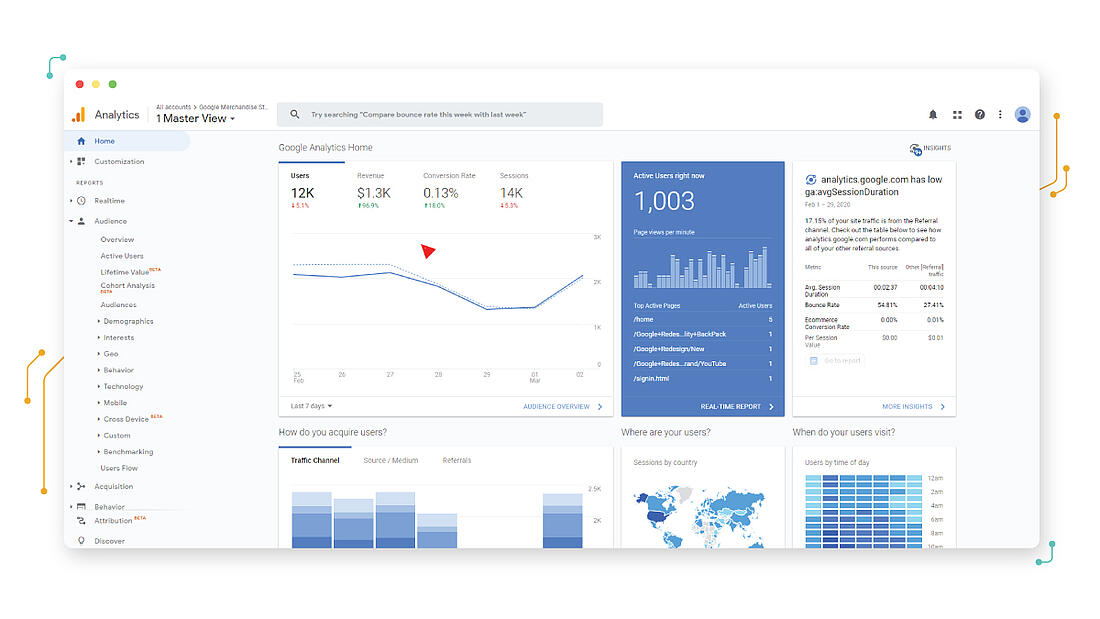
Google Analytics
You cannot have a list of website analytics tools without mentioning Google Analytics. Google’s tool is one of the most popular, if not the most commonly used digital analytics software.
Google Analytics performs an automatic collection of data. You can then create customized reports of said data. You just pick the dimensions and metrics you want to analyze and decide how you want them to be displayed. It can easily be integrated with other tools and platforms, especially Google Ads.
It gathers information about your visitors, such as age, gender, interest, device, and location (the demographics are actually estimates or assumptions).
You can also see which platforms you should target, as they drive a lot of traffic and can engage potential customers. You can set up goals that will help you track the customers’ journeys based on their actions.
Although wine gets better with age, Google Analytics doesn’t. For some, this tool is still hard to understand and the new GA4 update is really making marketers unhappy.
| Google Analytics | Website Statistics | Visitor Behavior |
| Features at a Glance |
|
|
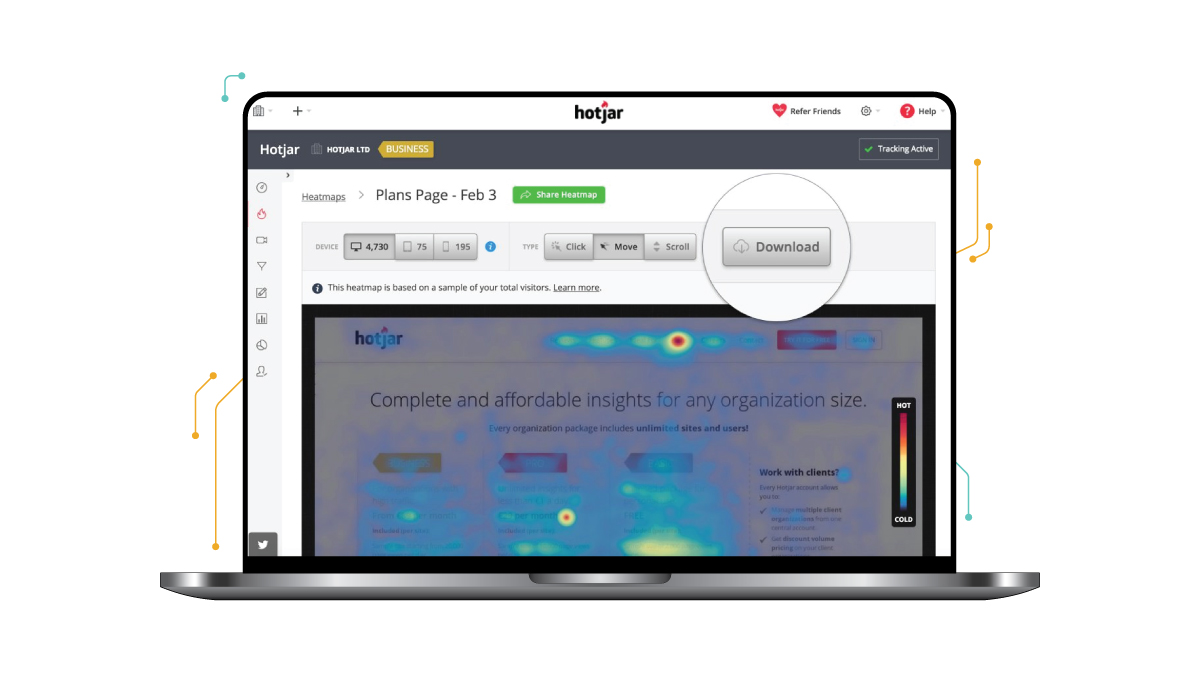
Hotjar
Hotjar is another popular analytics tool, but it does not focus on website statistics and traffic, but rather on user behavior insights and collecting feedback. It aims to help you understand how visitors interact with your website.
Hotjar uses heatmaps, visitor recordings, conversion funnels, and form analysis.
It also gives you ways of collecting visitor feedback through surveys and feedback polls. With such methods of data collection, your marketing, user experience (UX), and sales will definitely reach new heights.
| Hotjar | Visitor Behavior | Visitor Communication |
| Features at a Glance |
|
|
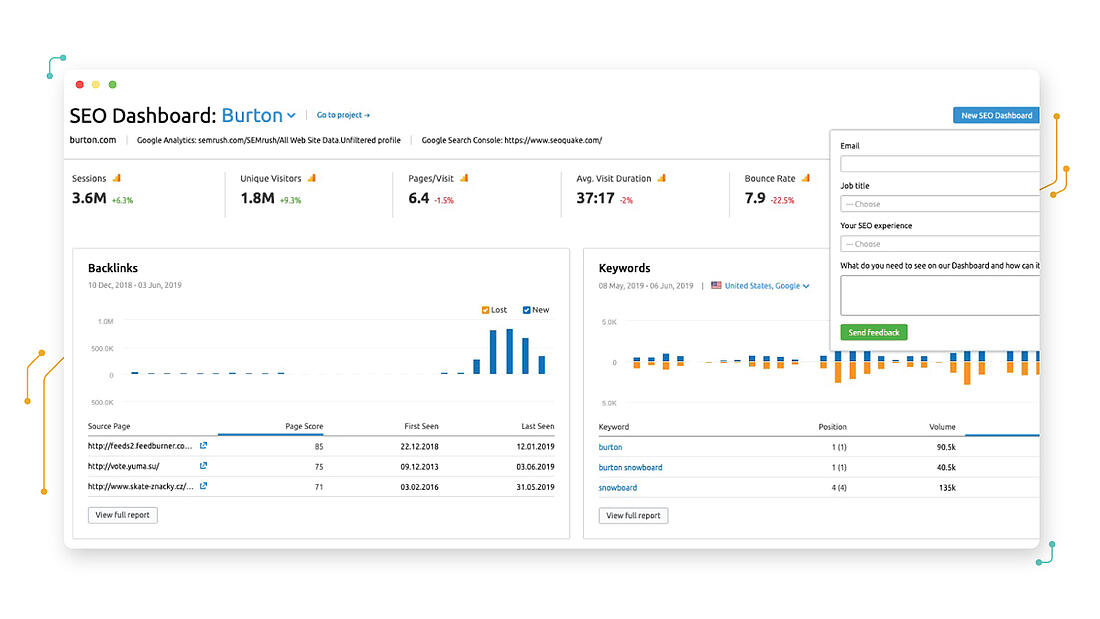
SEMrush
SEMrush is a slightly different type of website analytics tool by comparison in that it focuses on SEO analytics.
SEMrush has a multitude of SEO tools that will enable you to actually see the results of your SEO efforts, and find relevant, popular keywords that you can employ to raise your site's search engine rankings.
It's important to remember that SEMrush's metrics extend beyond your own website. You can use the features on the SEMrush dashboard to snoop on your rivals.
This analytics platform performs competitor analysis: it looks at your backlinks and digs deep into the data to help you understand what you have to do in order to out-rank the competition. It monitors your brand name, performs keyword gap analysis, and analyzes your digital marketing efforts.
| SEMrush | Website Statistics |
| Features at a Glance |
|

Crazy Egg
Crazy Egg is another website analytics software designed to help you improve website performance.This tool helps you understand the customer journey. It uses snapshots, heatmaps, and recordings. You can then use the data it gathers to make the changes to your website that it needs.
You will understand how people browse your website, and where in the potential buyer’s journey they could be dropping off. They also have an A/B testing feature that allows you to make data-backed decisions about the website, based again, on user experience.
It is also a good fit for our review because it provides a survey feature that helps you gain valuable insights from your users.
| Crazy Egg | Website Statistics | Visitor Behavior | Visitor Communication |
| Features at a Glance |
|
|
|
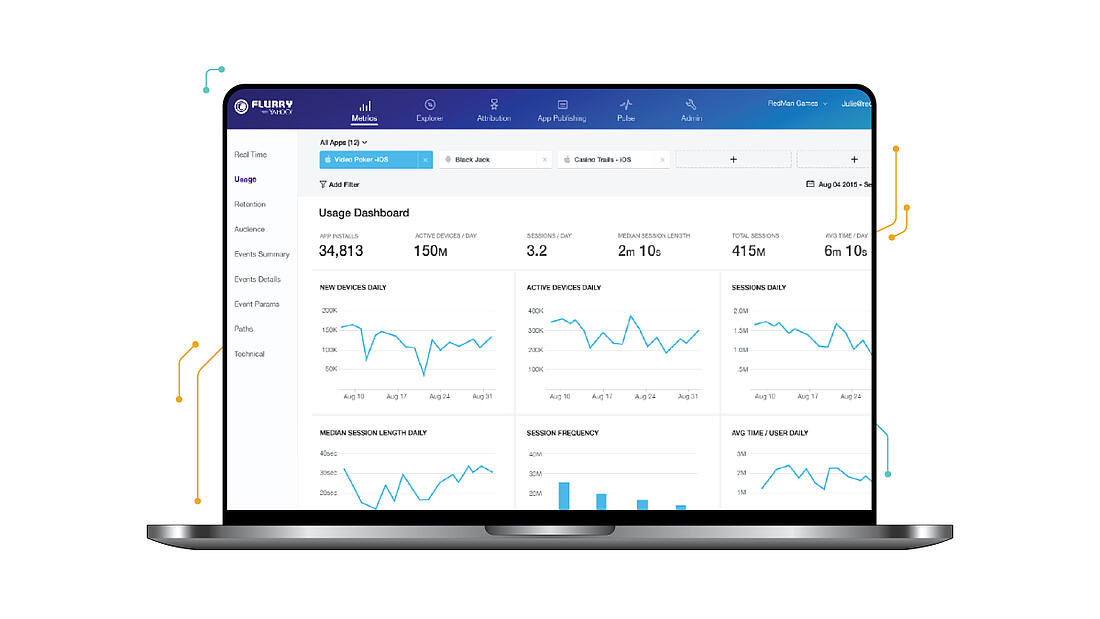
Flurry
Flurry was developed as an app analytics tool by the Yahoo! Developer Network.
Flurry is an analytics tool for mobile apps. With it, you can track installs, app engagement, the time spent within the app, among other things. They offer usable features which will provide those important insights that help an app grow.
It is a tool created to assist product, development, and growth specialists in creating apps that people love. It also helps to increase app engagement and support user acquisition campaigns. In addition, Flurry offers remote configuration, push notification management, and crash reporting.
It works for both Android and iOS and you do not have to be a programmer or any kind of specialist to understand it.
| Flurry | Website Statistics | Visitor Behavior |
| Features at a Glance |
|
|
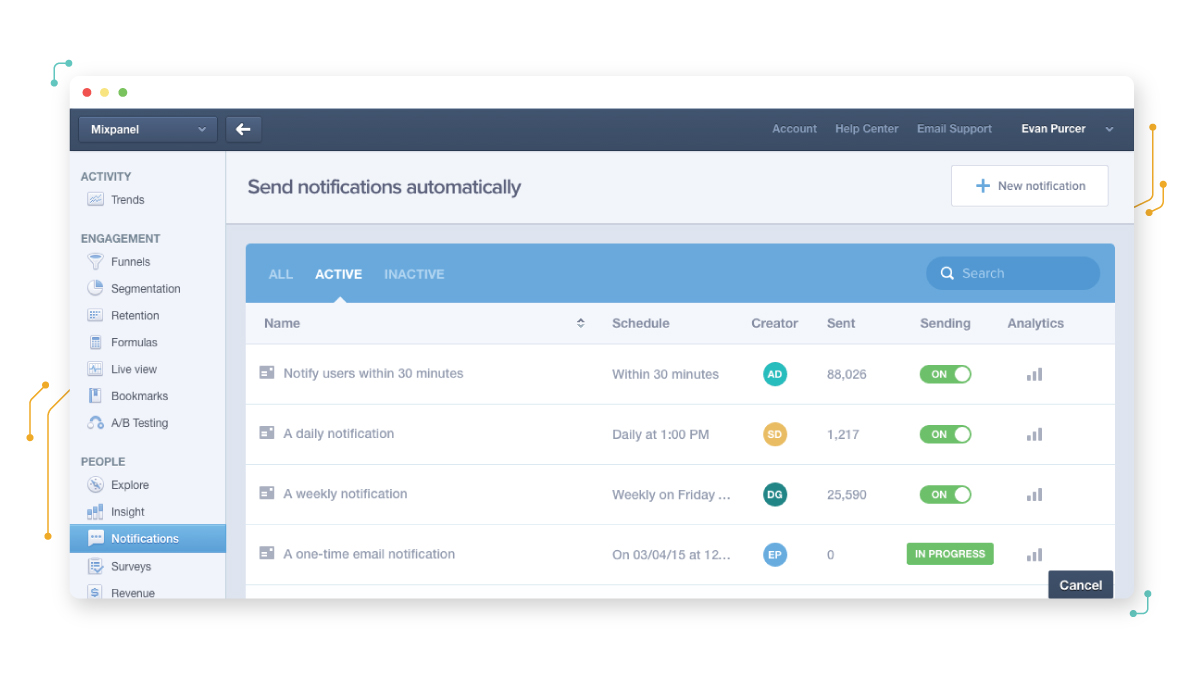
Mixpanel
One of the main features of Mixpanel is event tracking. You can specify which events you want them to track without knowing how to code them by hand. Other features include correlation analysis, impact analysis, and user profiles.
With this web analytics tool, websites are now able to anticipate user behavior, spot changes, and take appropriate actions thanks to the data science feature.
Mixpanel gives consumers access to powerful analytics, as well as simple yet detailed statistics on traffic, cohort creation, funnel building, and so forth.
Sadly, it doesn’t provide visitor communication features but has some integrations with third-party platforms that will allow you to create surveys or add a bot on your website so users can contact you.
| Mixpanel | Website Statistics | Visitor Behavior |
| Features at a Glance |
|
|
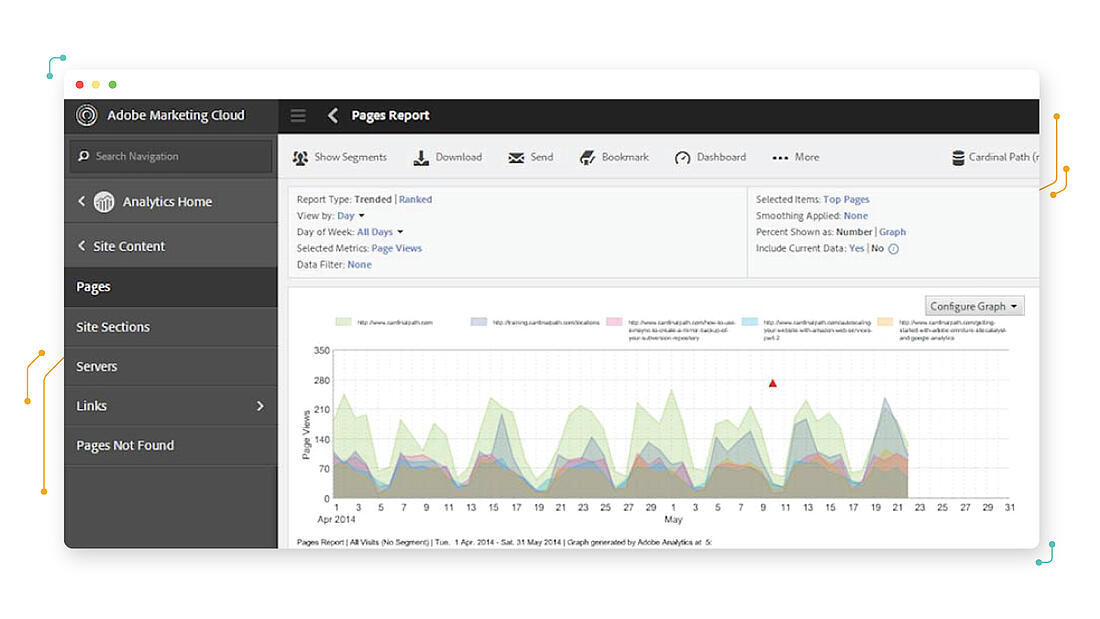
Adobe Analytics
Adobe Analytics can be a good choice if you need to gather information from more than just your website. It is a really robust tool for individuals who are more advanced because it enables you to bring data from almost anywhere and have it all in one place.
This tool offers real-time analytics. You can track user activity on social media and third-party data integration for your videos and mobile users.
Its advanced segmentation makes aggregated data on your website easy to understand. This helps you spend more time implementing new and improved strategies - instead of just trying to figure out what approach to take.
A cool thing about Adobe Analytics is that it implies predictive analytics such as: a machine learning system that automatically discovers unexpected anomalies within your data, hidden patterns in your data that explain statistical anomalies, and alerts based on data anomalies.
And while Safari 17.0 is currently blocking its tracking code, the company will no doubt find a way to resolve this issue in the near future.
| Adobe Analytics | Website Statistics | Visitor Behavior |
| Features at a Glance |
|
|
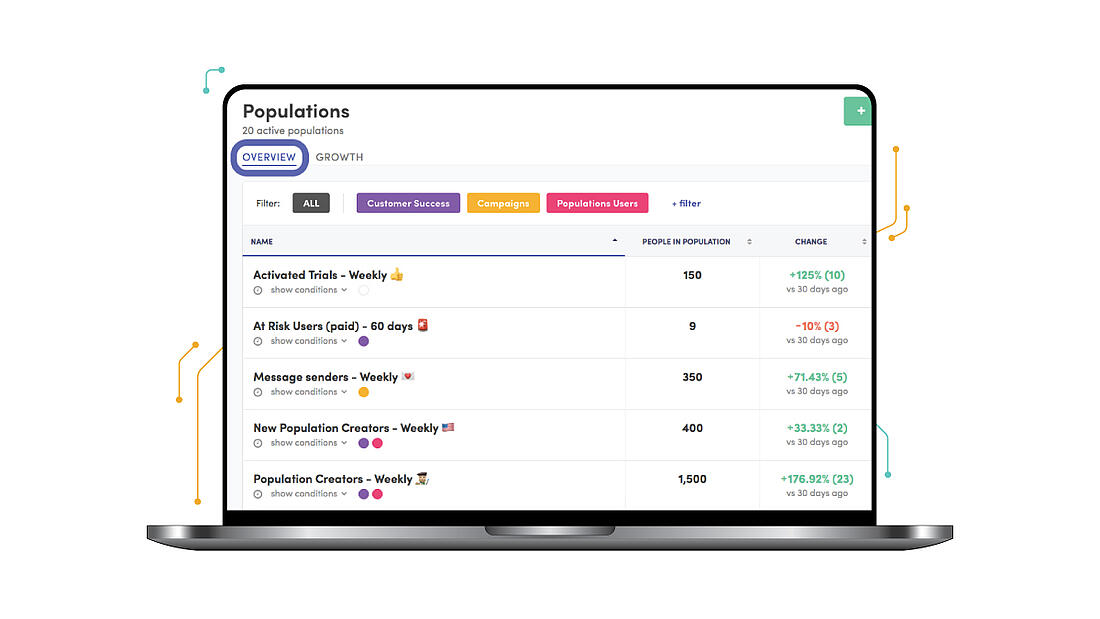
Kissmetrics
Kissmetrics helps you get to know your customers through data-driven insights and then engage them with targeted email and Facebook campaigns so that they become buyers.
You can view the entire journey across devices so that you know what your customers are doing, and what’s working and what's not. You can access all your data at all times, without sampling or history limits.
Kissmetrics includes real-time analytics, customer journey analysis, conversion tracking, data visualization, and segmentation.
Kissmetrics is especially well-suited to the e-commerce industry. If you own an online business, you can utilize Kissmetrics' insights to streamline your sales process and turn visitors into devoted customers.
| Kissmetrics | Website Statistics | Visitor Behavior |
| Features at a Glance |
|
|
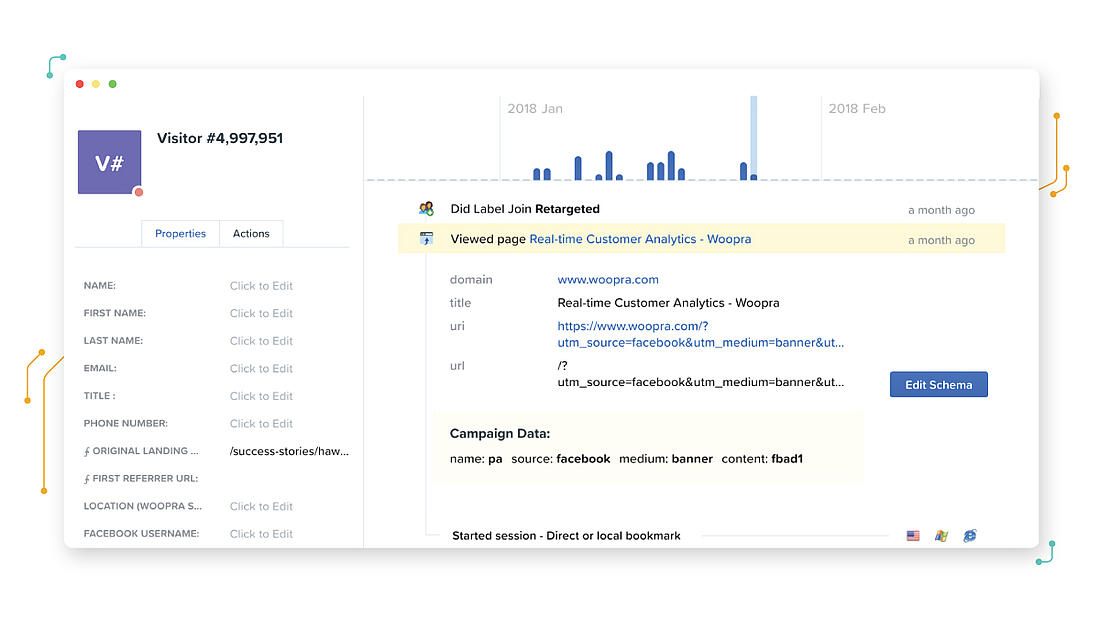
Woopra
Woopra lets you visualize and optimize every step of the customer journey. Understanding how every touchpoint affects the customer experience, and can drive growth and retention.
You get detailed information about what users are doing, as well as who is making payments or opening emails. It triggers custom real-time actions when a customer interacts with you and helps you build stronger customer relationships.
It doesn’t provide visitor communication features, but Woopra’s integrations with some live chat providers will enable you to automatically track live chat events in real-time.
| Woopra | Website Statistics | Visitor Behavior |
| Features at a Glance |
|
|
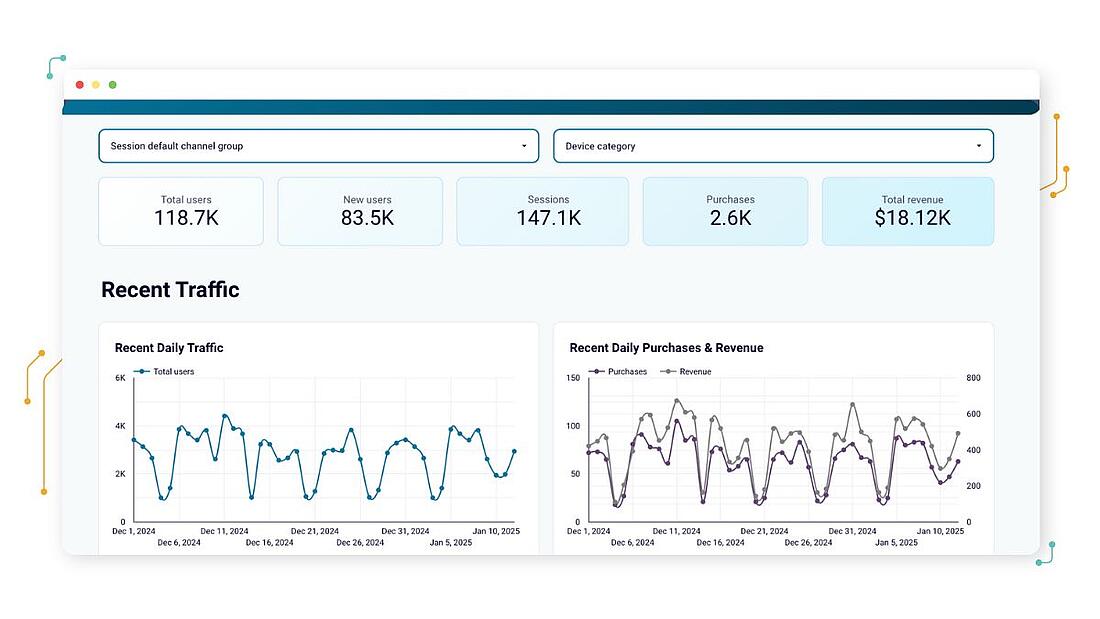
Coupler.io
Coupler.io represents another type of website analytics software that enables users to blend data from different sources and create reports. It helps users to keep track of their website analysis in one place.
Thanks to ready integrations, you can export Google Analytics data automatically, blend it with data from Search Console or other SEO software and create website analytics reports in spreadsheets and BI tools. This way, you'll always have fresh data on traffic, visitors, conversions, bounce rates, engagement, technical SEO, and more.
To get started, you can use Coupler.io's pre-defined website analytics dashboard templates, customize them as needed, or craft reports from scratch.
| Coupler.io | Website Statistics | Visitor Behavior |
| Features at a Glance |
|
|
Website Analytics Tools Rocking 2025
Without a website analytics solution, you are virtually operating without a map. But with so many options available, it's critical to pick the best analytics tool for your specific website.
We advise that as you investigate the various analytics tools, you should keep your company's goals in mind at all times.
Instead of looking for the oldest, best, or most feature-rich analytics provider, find the one that rocks and rolls your website.
Share article
Get Started for Free
Gain World-Class Insights & Offer Innovative Privacy & Security

You might also like
Data Management Strategy: Steps + Insights from Aleksejs Plotnikovs 08 January 2025 - by Simon Coulthard
08 January 2025 - by Simon Coulthard
The Complete Guide to Getting the Fundamentals of Your Website Right 12 April 2023 - by Simon Coulthard
12 April 2023 - by Simon Coulthard










